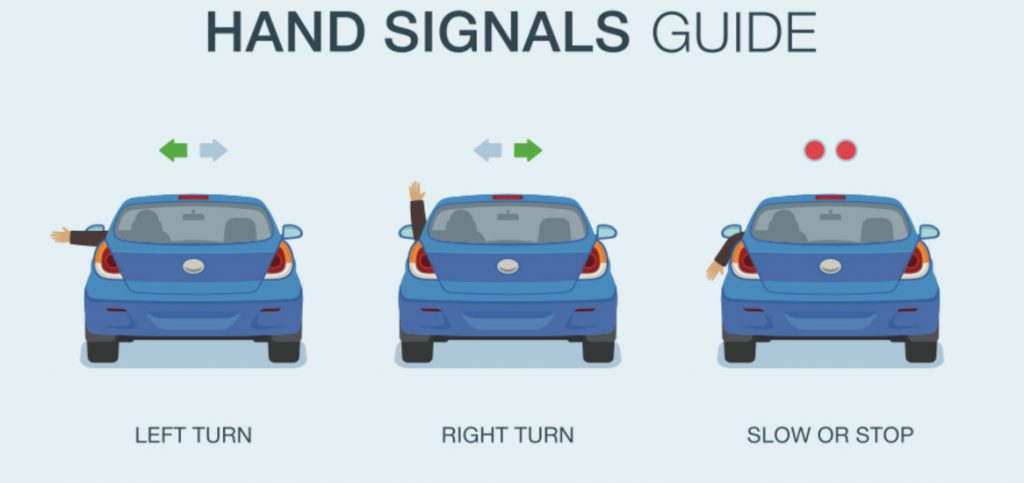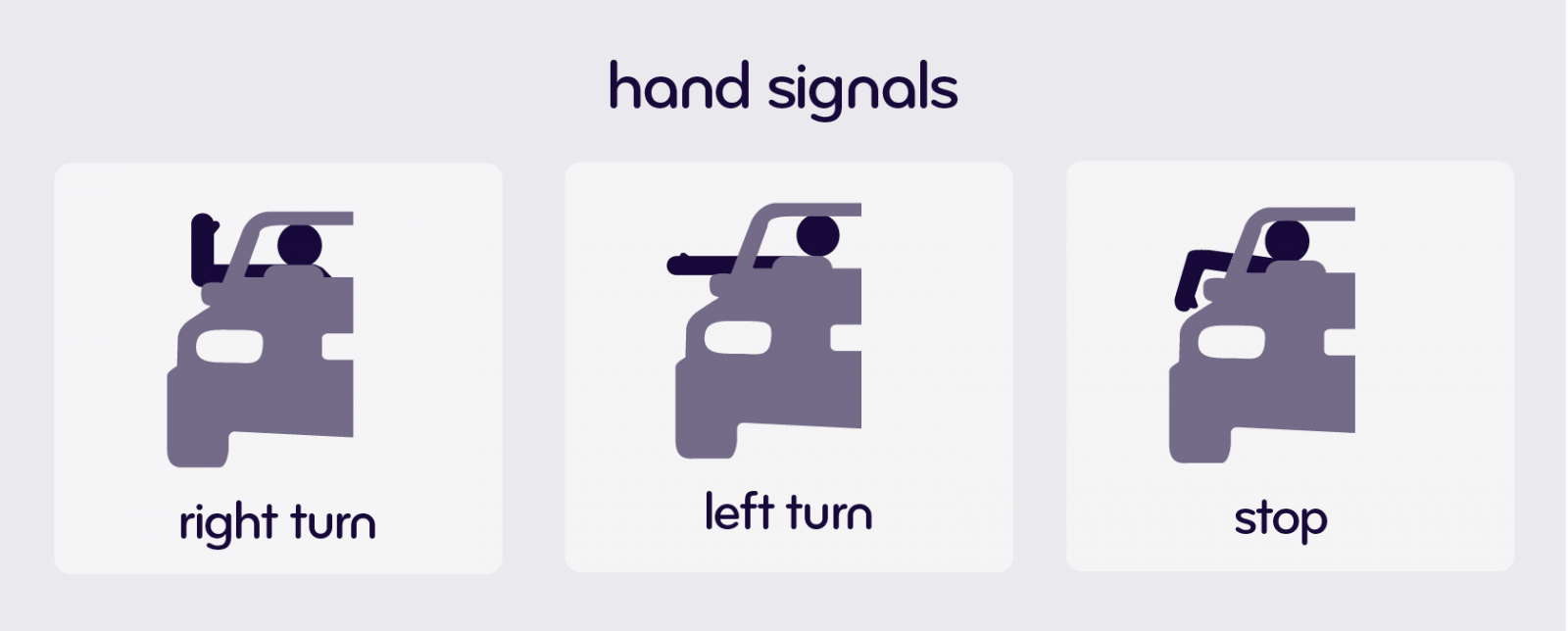There are certain rules to follow when driving on the road. To ensure road safety, you have to alert other drivers before taking every action. Of course, cars have turn signals and brake lights, but there are hand signals for driving because not all drivers can utilize them. Plus, these indicator lights could be broken and useless. In that case, hands are the only medium to communicate with others to avoid accidents.
Contents
What Are The Hand Signals For Driving?
Maintaining communication with other drivers is necessary when you are changing your trajectory, moving to another lane, or adjusting the speed. Signaling makes other people on the street aware of your intentions.
The Department of Motor Vehicles (DMV) proposes the official language of hand signals for driving that all drivers must know for safety purposes. These are the basics of hand signals:

1. Hand signal for left turn
What is the arm signal for a left turn? When you are making a left turn or moving to the left lane from the right side, the steps you need to follow are:
- Extending the left arm sideways out of the driver’s window. Keep the arm straight at a 180-degree angle and the fingers stretched.
- Make sure that the driver behind you can see the position of your arm.
2. Taking a right turn
The driving arm signal for turning right or moving to the right lane from the left side involves a couple of steps:
- Extending the left arm out of the driver’s window.
- The elbow will be at a 90-degree angle with the fingers pointing upward and the palm facing forward.
See more:
3. Stop hand signals
You need to press the brake to stop or slow down on the road.
At the same time, you have to make these hand signals so that others understand what you are going to do:
- Extend the left arm out of the driver’s window.
- Bend the elbow downward at a 90-degree angle. The fingers will be stretched, and the palm will face backward to the drivers behind you.

4. Signal to pass
When you want the vehicles behind you to move forward, show these hand signals:
- Extend the left arm out of the driver’s window.
- Keep the elbow bent at a 120-degree angle with the palm facing forward.
- Then, move the hand in a circular clockwise motion.
You should show the hand signals for driving for a while before making the turn or changing lanes. Maintain them until completing the move. The safest way is to give the signals at least 100 feet before taking the turn. It will give other motorists adequate time to realize your intention.
Watch more:
When To Use Hand Signals For Driving?
You don’t need to use these signals other than on some specific occasions. The state traffic laws require you to do that when:
- The brake or tail light does not work.
- You are riding a bicycle or a vehicle without turn signals.
You are driving early in the morning or evening because the light at these times makes it difficult to spot the light signals from other vehicles, sign signals will come in handy.
When driving and having trouble, experienced drivers often do not need to get out of the car or talk, they need to make hand signals to communicate with the other person (car in front – back) so they can be understood and navigated easily. Additionally, there are several cases you might also need to use hand signals:
- Emergencies: In emergencies where you need to stop suddenly or pull over, hand signals can be used to communicate your intentions to other drivers. For example, extending your arm straight out of the driver’s side window with your palm facing rearward indicates that you are slowing down or stopping.
- Cyclists and pedestrians: Hand signals can be helpful when interacting with cyclists and pedestrians on the road. For instance, using an appropriate hand signal to indicate that you are yielding to a cyclist or pedestrian can help prevent accidents or confusion.
- Non-functioning brake lights: If your brake lights are not working, using a hand signal to indicate that you are slowing down or stopping can serve as a backup method to communicate your intentions to other drivers.
What are some interesting “hidden” signals that drivers need to know? We hope that this article satisfies your taste!



